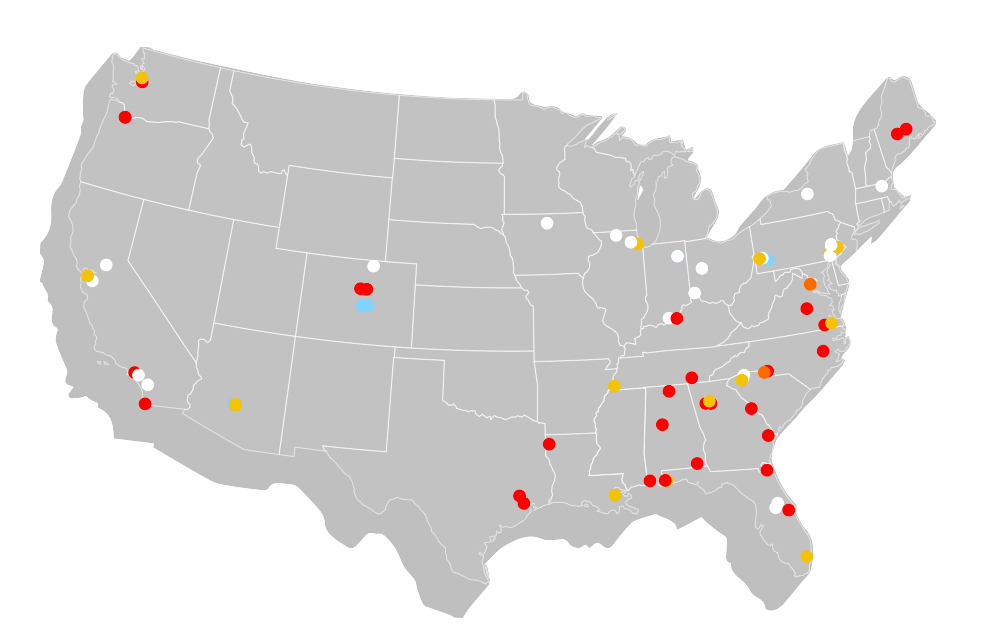Using GPR, scanning concrete is a quick and nondestructive method for uncovering information about a concrete structure. Concrete is a popular composite material used to construct foundations, walls, bridges, and parking garages, but the material is not invulnerable to damage. ATS’s GPR (ground penetrating radar) scanning services investigate the source and extent of issues concealed beneath the surface.
Condition Evaluations
Clients may request concrete GPR scanning to gather information about a concrete slab. During a scan, a transmitter antenna emits electromagnetic waves that bounce off scanned materials. A console displays the signal reflections in a cross-section for real-time results. A skilled technician from ATS has the training and experience to translate the data into practical terms, such as:
- Estimated slab thickness
- Concrete coverage of rebar
- Embedding location and materials
- Presence of voids and anomalies
Damage Detection
GPR is a nondestructive method that allows safe and efficient testing without endangering the structure, operation, or current workers. ATS frequently performs GPR scanning at sites with damaged concrete. Surface damage can indicate a larger issue, but without powerful equipment, clients may not recognize the extent of the problem.
Damage in concrete takes multiple forms:
- Spalling
- Cracking
- Carbonation
- Efflorescence
- Delamination
- Voids
Aging concrete shrinks and loses strength, which could leave the structure vulnerable to carbonation and corrosion. Damage may originate with severe weather or environmental changes, as well as:
- Abrasion
- Compression stresses
- Fatigue
- Leaks from cracked utilities
- Rebar corrosion
- Tension stresses
- Thermal exposure
- Vibration
Concrete Mapping
Maintenance and construction work may also disturb concrete. For instance, when a utility contractor drills into concrete to access water pipes or electrical conduits, they risk puncturing an embedded object with disastrous consequences. Renovation crews also face life-threatening injuries and structural collapse if they sever post-tensioning cables and rebar.
Additional consequences of operating without a thorough understanding of the dimensions and embeddings include:
- Power outage
- Pipe burst
- Flooding
- Electrocution
- Downtime
- Structural damage
GPR Benefits
GPR scans enable building owners and repair crews to take preventative measures before structural integrity is lost. Utility and construction contractors with access to concrete mapping from a GPR survey benefit from:
- Quicker, more efficient service
- Avoiding catastrophic failure
- Protecting workers from injury and death
- Saving expenses in medical care, repairs, and liability
We Are ATS
Since our founding in 1967, ATS has delivered consulting engineering, calibration, inspection, and testing services. Over the years, we have built a Family of Companies operating from coast to coast. We reach clients in multiple industries, such as construction, commercial property, and manufacturing.
ATS is a leading provider of nondestructive testing in North America. The lab at our headquarters in Marietta, Georgia, performs a wide range of tests and inspections. We have earned accreditation in calibrations and mechanical, chemical, electrical, and nondestructive testing from A2LA, as well as accreditation in nondestructive and material testing from NADCAP. To read more about our recognitions, click here.
Contact Us
If you have found signs of concrete damage, need embedded utility repairs, or are planning renovations that impact a concrete slab, you may need a GPR survey. Call +1 (888) 287-5227 or complete the request web form to schedule a GPR scan of your concrete slab.
We also offer related tests for metals, composite materials, and cable tensions. Our structural engineers can perform engineering inspections and plan repairs for building envelopes, parking structures, and foundations.



